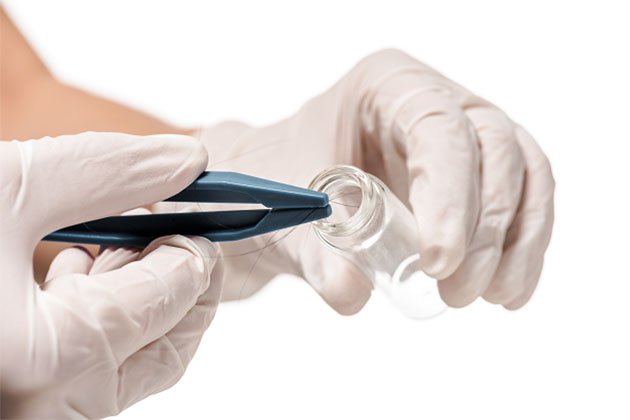Lo studio mostra il primo passo verso lo sviluppo di un test per misurare lo stato della vitamina D da campioni di capelli
Più di 1 miliardo di persone nel mondo sono carenti di Vitamina D. This deficiency affects primarily bone health and also increases one’s risk of cardiovascular malattia, diabete, cancro etc. Due to this implication assessment of Vitamina D has gained interest. Vitamina D è misurato tramite a esame del sangue which measures the concentration of best biomarker of Vitamina D dentro sangue called 25-hydroxyvitamin D (25(OH)D3). The sangue sample needs to be collected in hygienic conditions under trained medical personnel. This test is an accurate estimate but its biggest limitation is that it reflects status of Vitamina D at a single time point and does not account for high variability of Vitamina D thus requires frequent sampling. A single value may not be an ideal representation as Vitamina D levels could differ in our body depending upon season or other factors. The test is expensive and a cost burden especially in low-and-middle-income countries. But, because high proportion of population is now deficient in Vitamina D this sangue test is being increasingly requested.
Uno studio pubblicato Nutrienti led by Trinity College, Dublin has shown for the first time that Vitamina D can be extracted and measured from human hair1. Authors themselves provided three hair samples for the study, two harvested from crown area of the scalp and one from beard, which were cut into 1cm length, weighed, washed and dried. 25(OH)D3 was extracted from these samples using the same procedure used to extract steroid hormones from hair2 in which a mathematical formula takes measured concentrations of the biomarker using Liquid chromatography-Mass Spectrometry (LC-MS) or Mass Spectrometry (MS) and provides an approximation of concentration in the hair. At the same time, sangue from all tissue samples was also analyzed using MS. Quantifiable concentrations of 25(OH)D3 present in both hair and beard samples were measured validating feasibility of such a measurement.
Human hair grows approximately 1 cm every month and Vitamina D is deposited to the hair continuously. More Vitamina D is deposited to hair when levels of Vitamina D nel sangue are high and less is deposited when they are low. A test which could measure vitamina levels from hair can tell us about Vitamin D status over a longer duration – several months at least taking into account seasonal differences. The longer one’s hair, more accurately status of Vitamin D can be measured, example several months to years and this could be treated as a long-term record.
This is an inexpensive, non-invasive method to capture Vitamina D status and can help medical professionals to maintain levels of Vitamin D concentrations in a person over time. The exact association between Vitamin D in sangue and in hair over a period of time needs further research as factors such as hair color, hair thickness and texture could affect Vitamina D in hair.
***
{Puoi leggere il documento di ricerca originale facendo clic sul collegamento DOI indicato di seguito nell'elenco delle fonti citate}
Fonte (s)
1. Zgaga L et al. 2019. Misurazione 25-Hydroxyvitamin D in capelli umani: Risultati da uno studio di prova di concetto. Nutrienti. . 11 (2). http://dx.doi.org/10.3390/nu11020423
2. Gao We et al. 2016. Analisi basata su LC-MS degli ormoni steroidei endogeni nei capelli umani. J. steroidi biochimici. Mol. Biol. 162 https://doi.org/10.1016/j.jsbmb.2015.12.022






































